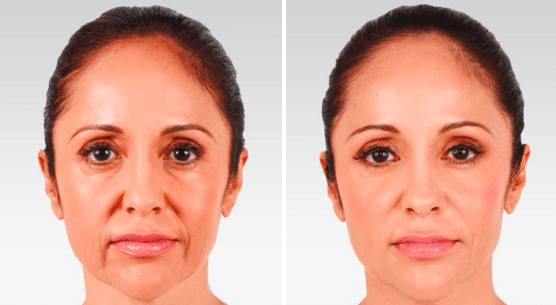
Wrinkle fillers can help you achieve the look that you desire for a fraction of the cost that traditional facelift procedures cost. The procedure can fill wrinkles, lines, and hollows in less than half an hour, and provide results that can last from 5 months to over one year. Unlike Botox injections, which relax the muscles underneath a wrinkle, wrinkle fillers fill the crease, line or wrinkle with one of the few substances, which help to eradicate trouble spots. The filler can also be used as “volumizers”, lifting jawlines, chins, temples, and filling out lips, plumping cheeks, and sagging hands. Different types of New York fillers are suitable for different types of wrinkles. Thus, ensure your doctor is a board-certified dermatologist with special training. Your doctor can help you choose the most suitable one for you. All wrinkle fillers have side effects, which range from redness at the site of injection to the risk of an allergic reaction.
Hyaluronic Acid Fillers
Every type of filer works in a different way, making the results vary. Hyaluronic fillers are the most popular category of wrinkle fillers. The results can last for over a year or two, and research shows that repeated injections can trigger the body’s own natural production of elastin and collagen. Collagen and elastin can help reduce the number of wrinkles and lines. The side effects are rare and may include bruising at the injection site, swelling, and redness. The filler may also appear as small bumps on the skin but this issue usually improves with time. Some examples of hyaluronic acid wrinkle fillers include Juvederm and Belotero.
Synthetic Wrinkle Fillers
This type of wrinkle filler is not related to anything found naturally in the body. It’s a relatively smaller category made up of lab-made substances, which provide a longer-lasting effect. One of the products in this category offers semi-permanent effects. Generally, filler products with longer-lasting effects are more likely to cause side effects, and fillers in this category are no exception. The typical side effects include bruising at the site of injection, swelling, and redness. Other side effects are bumps or nodules that can be felt under the skin, and in rare cases may require surgery. Examples of synthetic wrinkle fillers are Sculptra, Radiesse, Bellafill, and Silicone, among others.
Collagen Wrinkle Fillers
The first wrinkle filler ever made was collagen extracted and purified from cows. It worked well but the results did not last for long, as most collagen fillers begin to break down after only one month of treatment. They also required allergy testing beforehand as they had a higher rate of an allergic reaction. However, these risks have been mitigated by new ways of processing collagen. Additionally, new forms of synthetic collagen are being manufactured, helping to make these injections safer and more applicable to a wider range of people. Many believe that these results are relatively more natural-looking, although they still don’t last as long as the other wrinkle fillers. Common side effects of collagen wrinkle fillers include some risk of allergic reaction as well as redness and bruising at the site of the injection. This is mostly for those people still using the collagen from cow sources. Popular examples of collagen injection include Cosmoderm, Zyderm, Fibrel, Zyplast, and Evolence.
